How-to Guide: Deep Learning for Image Recognition Applications
Sanam Malhotra | 13th August 2020

The scope of Artificial Intelligence (AI) is as expansive as we find. One such significant application of AI’s deep learning for image recognition is making remarkable strides with dynamic use cases.
We at Oodles, as an AI Development Company, present a comprehensive guide to deploying enterprise-grade image recognition applications using deep learning techniques.
Image Detection Vs Image Classification Vs Image Recognition
As a beginner, it is essential to understand the underlying techniques of computer vision technology. Here’s the breakdown-
a) Image Detection is the first step wherein machines detect a certain object in an image. A step further, multiple object detection involves locating several objects in an image by drawing bounding boxes around them.
b) Image Classification annotates the detected object with a class label or a category, for example, cat, dog, etc.
c) Image Recognition envelopes the above two techniques, training machines to detect, classify, and identify the objects by matching them with given data. For instance, face recognition functionality in smartphones that authenticate a human face by matching it with database input.
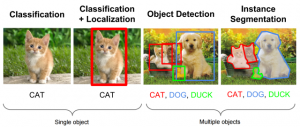
A step further in object localization is object segmentation that highlights the detected object with specific pixel boundaries instead of broad bounding boxes.
As a thriving Computer Vision Development Company, we at Oodles, elaborate on the application of deep learning for image recognition using industry-best tools and techniques.
Inside a Deep Learning Model for Image Recognition
Under the hood, deep learning models constitute several neural network architectures whose working simulate a human brain’s visual cortex. Specifically, Region-based Convolutional Neural Networks or R-CNNs are a family of deep neural networks applied for object localization and image recognition. An R-CNN model constitutes three major modules namely-
a) Region proposal for generating candidate bounding boxes
b) Feature extractor for extracting features from the identified objects
c) Classifier for annotating the object with labels or categories.
Here’s how the R-CNN model functions-

In comparison to CNN models, the R-CNN approach is faster and more accurate. Fast R-CNN and Faster R-CNN are the two extensions of the same model family promising speed and accuracy.
For an R-CNN model to predict accurately, it is imperative to train it with relevant images and visual information.
The better the quality of training data, the more accurate and efficient the image recognition model is.
The most important parameters while training a neural network model include-
a) Size, quality, and quantity of images
b) Number of color channels
c) Aspect ratio and image scaling
d) The mean and standard deviation of input data
e) Available data variations, and more.
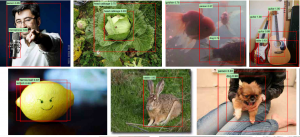
A random example of image recognition using the R-CNN model as published in the report, “Rich feature hierarchies for accurate object detection” by Ross Girshick and others from UC Berkeley.
Tech Stack Used for Deep Learning-based Image Recognition
For enterprises to successfully deploy deep learning for image recognition applications, they must employ effective tools and ML libraries. Below are the most robust toolkit essentials to build image recognition applications-
1) TensorFlow
An open-source machine learning library, TensorFlow has become a star resource for compiling and executing complex machine learning models. The comprehensive framework is used for various applications like image classification and recognition, natural language processing (NLP), and document data extraction. It can be easily paired with other machine learning tools such as OpenCV to add more value to any machine learning project.
2) TensorFlow Lite
A lighter version of TensorFlow, TensorFlow Lite (.TFLITE) is customarily designed to run machine learning applications on mobile and edge devices. With limited memory requirements, TensorFlow Lite disrupts computing constraints and encourages serverless ML development.
However, the framework only facilitates running and not the development of ML models from scratch. The tool is used to convert pre-built and pre-trained ML models on mobile devices.
3) Keras
Keras is a budding neural network library with the ability to run on top of TensorFlow and other ML libraries. Simply put, it is a high-level API capable of deploying TensorFlow functions parallelly. For deep learning, Keras ensures a convenient and speedy prototyping facility while simplifying complex TensorFlow functions for ML beginners.
With a working knowledge of TensorFlow and Keras, the Oodles AI team can efficiently deploy these ML frameworks for various enterprise applications. The next section elaborates on such dynamic applications of deep learning for image recognition.
Enterprise Applications of Image Recognition With Deep Learning
1) Deep Video Analytics
An AI-driven model can accelerate the automation of over 70% back-office operations resulting in 5X productivity. With deep learning-based image recognition, enterprises can now automate data analytics for streaming CCTV footage, video clips, and drone footage. Image recognition for video content can streamline the following applications-
a) Comprehensive surveillance for security checkpoints at airports, stations, office premises, etc.
b) Contactless attendance systems for employees, students, and workers.
c) Face recognition for eKYC, seamless payment at retail stores
d) Extraction of key information from video clips and datasets for better decision-making, and more.
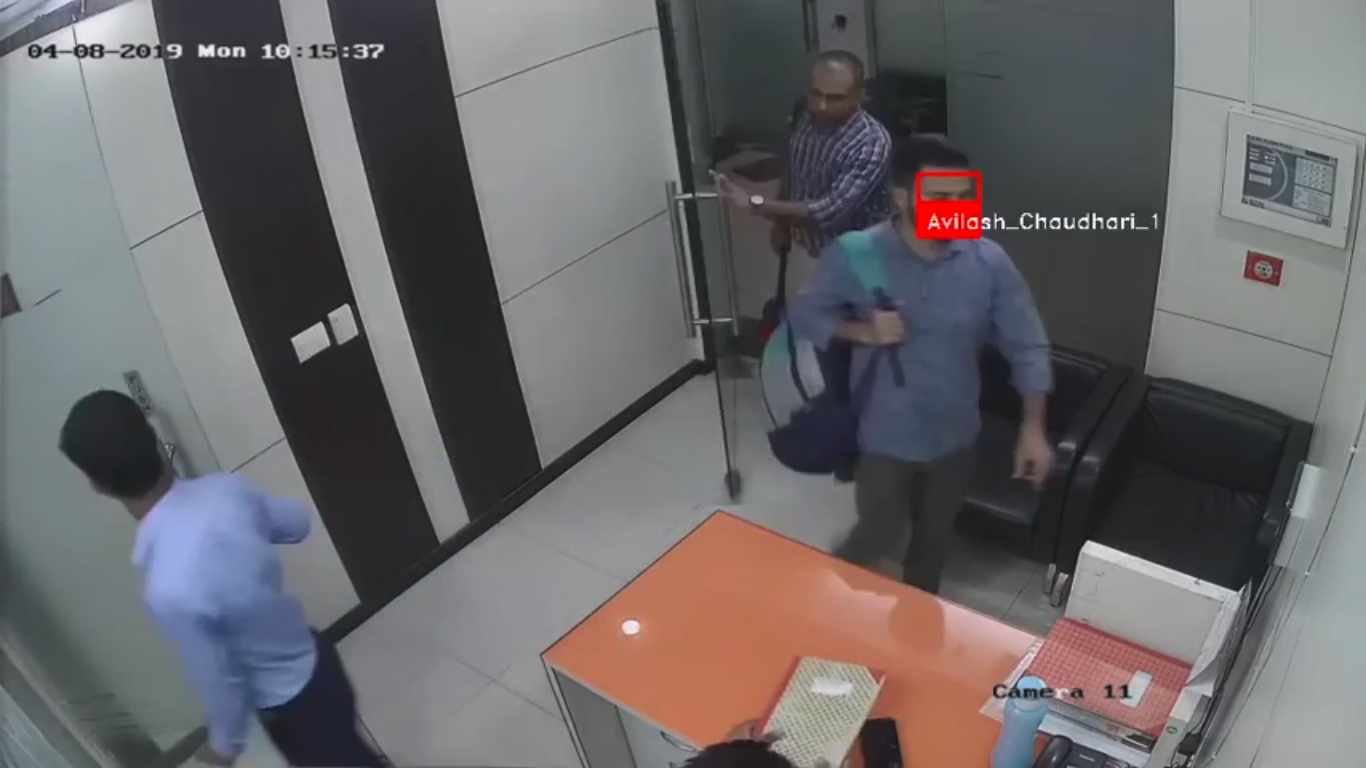
At Oodles, we built and employed a face recognition system for automating employee attendance at one of our office premises. The model is trained using numerous employee images to achieve over 95% accuracy.
Read more | AI for Video Analytics: Enterprise Applications and Opportunities
2) Medical Image Analysis
In light of crippled healthcare infrastructures worldwide due to the COVID-19 crisis, there’s an urgent need for technologically advanced healthcare solutions. We, at Oodles, are constantly exploring new opportunities for improving diagnosis with applications like-
a) Disease detection from X-rays, MRIs, CT scans, and other medical imageries
b) Contactless thermal screening
c) Social distancing enforcement and more.
TensorFlow is an effective tool for training ML models to identify infections, bone fractures, and anomalies in medical imageries, as one given below-
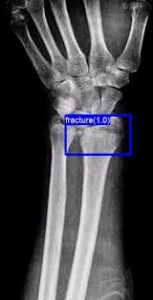
Deep learning experts at the Hebrew University, Israel deployed CNNs to detect bone fractures in X-rays.
Read more | Improving Diagnosis with Computer Vision Applications in Healthcare
3) Automated Image Caption Generator
The insights received from image recognition can be further used as inputs for generating AI-powered image captions. The application is gaining traction among large data houses such as Google and social media channels to accelerate image analysis significantly.
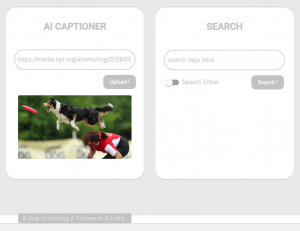
An AI-powered image caption generator built by the Oodles AI team in action.
In addition to CNNs and RNNs, the AI-powered image caption generator uses LSTM (Long Short Term Memory) to predict object description text. Auto subtitling, digital news creation, quick social media posting are some high-end use cases of image caption generator.
Read more | Building and Deploying an AI-powered Image Caption Generator
The dawn of AI has led dynamic applications to emerge and redefine enterprise applications. We, at Oodles, are at the frontline of employing disruptive AI technologies to build expansive solutions and deliver seamless services.
Team up with our AI Development Team to learn more about our AI capabilities and recent developments.



